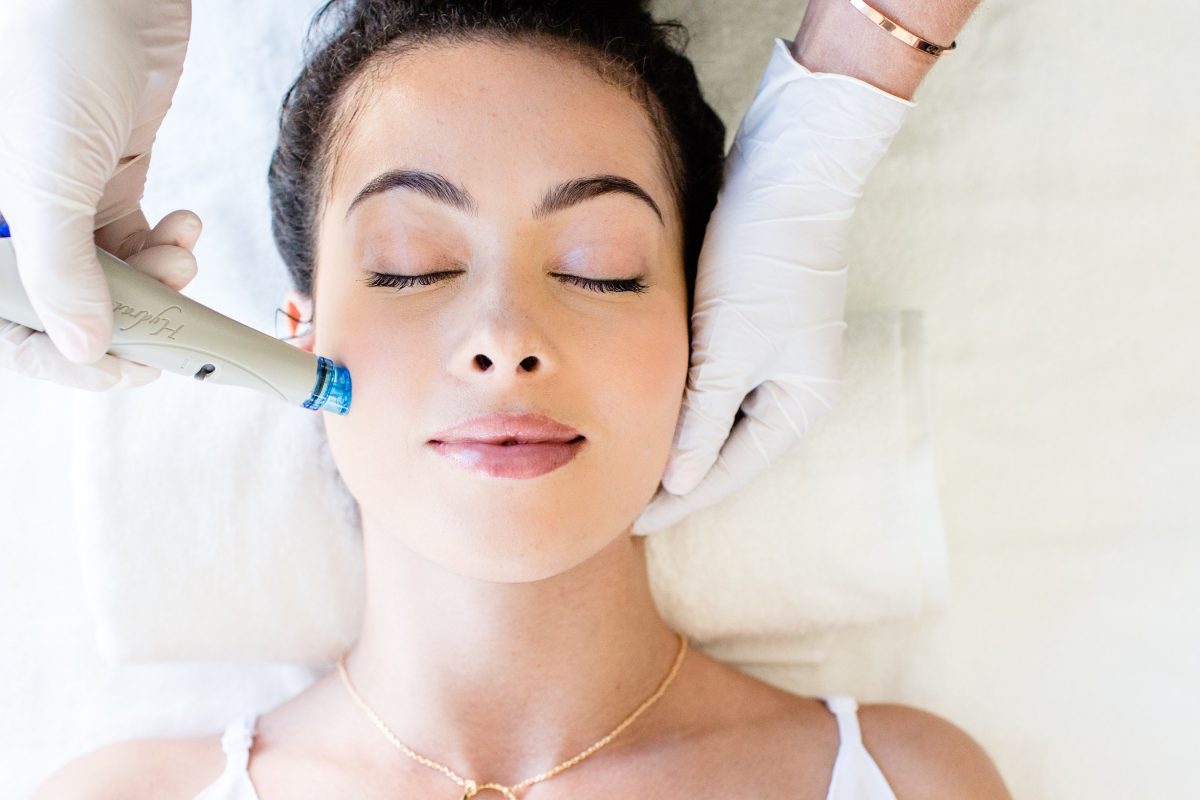Facials are a cornerstone of skincare routines, offering various benefits depending on the type of treatment. Among the many options available, Hydrafacial and traditional facials are two popular choices. This article compares Hydrafacial In Dubai with traditional facials, highlighting their unique features, benefits, and differences to help you determine which is best suited for your skincare needs.
Traditional Facials
1. What Are Traditional Facials?
Overview
Traditional facials encompass a variety of treatments typically performed in a spa or salon setting. These facials generally include cleansing, exfoliation, massage, masks, and moisturization. They can be tailored to address specific skin concerns and are often designed to provide relaxation as well as skincare benefits.
Types of Traditional Facials
- Classic Facial: Includes cleansing, exfoliation, extraction, mask application, and moisturizing.
- Anti-Aging Facial: Focuses on reducing signs of aging through ingredients like collagen, peptides, and antioxidants.
- Deep Cleansing Facial: Targets clogged pores and acne with intense cleansing and extraction.
2. Benefits and Considerations
Benefits
- Customization: Traditional facials can be customized to address specific skin concerns and needs.
- Relaxation: Often includes a relaxing massage and spa experience, contributing to overall well-being.
Considerations
- Results May Vary: The effectiveness can depend on the products and techniques used, and results may vary from one treatment to another.
- Potential Downtime: Some traditional facials may involve manual extractions or strong exfoliants that can cause temporary redness or irritation.
Hydrafacial
1. What Is Hydrafacial?
Overview
Hydrafacial is a non-invasive, multi-step treatment that combines cleansing, exfoliation, extraction, and hydration using a specialized device. It uses patented Vortex-Fusion technology to deliver immediate and noticeable results with minimal downtime.
Key Features
- Vortex-Fusion Technology: Delivers hydrating serums and extracts impurities through a vortex-like suction mechanism.
- Multi-Step Process: Includes cleansing, exfoliation, extraction, and hydration in one comprehensive treatment.
2. Benefits and Considerations
Benefits
- Immediate Results: Provides visible improvements in skin texture, hydration, and radiance after just one session.
- Minimal Downtime: The treatment is non-invasive and requires little to no recovery time.
- Consistency: Offers consistent results due to the standardized technology and serums used.
Considerations
- Cost: May be more expensive compared to traditional facials due to the advanced technology and specialized equipment.
- Limited Relaxation: While effective, it may not offer the same level of relaxation as a traditional facial with massage and spa amenities.
Comparing Hydrafacial and Traditional Facials
1. Treatment Approach
Hydrafacial
- Technology-Based: Utilizes advanced technology and serums to address multiple skin concerns simultaneously.
- Focused on Results: Emphasizes immediate skin improvements and deep hydration.
Traditional Facials
- Manual Techniques: Involves manual techniques like massage and extractions, which can be customized based on individual needs.
- Relaxation and Pampering: Often includes a relaxing experience with various spa-like elements.
2. Suitability for Skin Concerns
Hydrafacial
- Versatility: Suitable for all skin types and concerns, including dryness, oiliness, sensitivity, and signs of aging.
- Targeted Treatment: Effective for addressing specific issues like hydration, clarity, and texture.
Traditional Facials
- Customization: Can be tailored to specific skin concerns, such as acne or aging, based on the products and techniques used.
- Holistic Approach: Offers a broader range of treatments and can be adjusted according to individual preferences and needs.
3. Duration and Frequency
Hydrafacial
- Session Length: Typically lasts between 30 to 60 minutes.
- Frequency: Recommended as a regular treatment, often on a monthly basis, for maintaining results and skin health.
Traditional Facials
- Session Length: Varies depending on the type of facial, generally lasting between 60 to 90 minutes.
- Frequency: Frequency can vary based on skin needs and personal preferences, from monthly to bi-monthly treatments.
Choosing the Right Treatment
1. Assessing Your Needs
- Immediate Results vs. Relaxation: If you seek immediate skin improvements and minimal downtime, Hydrafacial may be the better option. For a more relaxing and customizable experience, a traditional facial may be preferable.
- Skin Concerns: Consider your specific skin concerns and goals. Hydrafacial offers a comprehensive approach for various issues, while traditional facials can be tailored to specific needs.
2. Consulting with a Specialist
- Professional Advice: Consult with a skincare specialist to determine which treatment aligns best with your skin type, concerns, and goals. They can provide personalized recommendations based on your individual needs.
Conclusion
Both Hydrafacial and traditional facials offer unique benefits and cater to different skincare needs. Hydrafacial provides a high-tech, results-oriented approach with minimal downtime, making it ideal for those seeking immediate improvements. Traditional facials offer a customizable, relaxing experience that can be tailored to specific skin concerns. Understanding these differences will help you make an informed decision about which facial treatment is best suited for your skincare routine.





Comments